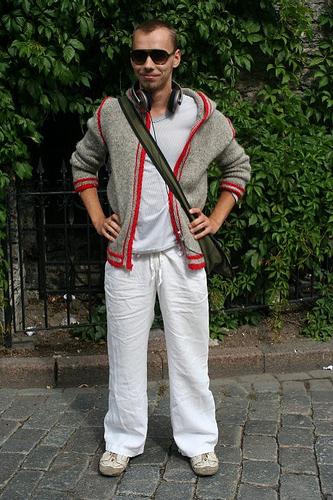Business style: speech, clothing, appearance
Business relations in the sphere of business, politics, management assume the observance of a certain style in clothes, in speech, in behavior.
Business style of speech is the language of business communication at various levels of power and management. It has certain requirements for both written and oral forms.
Officially business style of language - style of documents - is used in jurisprudence, international relations, economy, military branch, in governmental and other administrative activities.
Business speech is distinguished by the use of speech cliches (templates, standards), which in other styles are considered a disadvantage. Written and oral form of business style is characterized by the following features:
a) use of language means in speech is compressed, compact, economical;
b) in writing, frequent use of the standard layout of the material (forms, forms);
c) the use of terminology, clerical vocabulary and phraseology (in accordance, on the basis of others), abbreviations and complex words;
d) the use of verbal nouns, prepositions and complex conjunctions (in relation, at the expense of, along the line, in view of the fact that others), of stable phrases (in case, if; for the reason that)
e) the speech uses a narrative presentation of information;
e) use of complex sentences with enumerations; order in direct sentences;
g) lack of emotionally expressive speech tools, individualization of style.
Business style of communication, except for the speech environment, includes a system of receptions and means of influence on interlocutors, partners, employees.
In interaction with people, business communicationassumes the presence of such qualities as the ability to comprehensively address communication issues, taking into account the capabilities of partners; ability to manage resources, organizational abilities.
In dealing with people, the business style requires choosing a particular behavior that depends on the situation:
a) authoritarian style (distance, superiority);
b) democratic (equal rights of participants in communication)
c) problem-target
Business style in clothes also has restraint, conservatism, functionality in choosing fabric and color, cut and accessories.
However, there is a gradation of the style of clothing for its purpose: a strict business style (necessary for meetings, negotiations, meetings at a high level); everyday business style; conditional-business style.
Business style in clothes combines trendsclassics and sports style: elegance and convenience. Suits, jackets, skirts, trousers should sit well, the cut of models is chosen with a minimum of additional details. When choosing styles, it is necessary to take into account the style and profile of the company, firm, organization. At any time of the year a woman should wear tights (stockings) of natural color.
One of the categorical requirements for business style clothing is neatness.
Fabrics predominate natural, it is allowed up to fifteen percent of synthetics. The color of the fabric is gray, dark blue, black, beige.
Accessories should not be conspicuous. The color of the bag, belt, wallet is selected for shoes of classic style. The jewelry is real, the watch is quality. Sunglasses are translucent, at the entrance to the premises are removed from the view.
The headdress is chosen by the classical style, without ornaments. Scarf is allowed only fabric on the lining, not knitted, leather gloves.
Huge importance in the external appearance of businessa man is playing a hairdress, manicure, make-up. The grooming of hair, hands, nails shows organization, the ability to distribute time. Gray in a man is allowed, but a woman in no case. The makeup type is natural, without bright colors.







